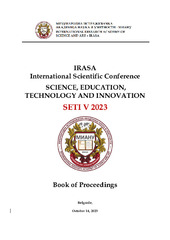Приказ основних података о документу
Application of fermented extract of horsetail (Equisetum arvense L.) to control tomato late blight (Phytophthora infestans (Mont.) de Bary)
| dc.creator | Filipović, Vladimir | |
| dc.creator | Popović, Vera | |
| dc.creator | Dimitrijević, Snežana | |
| dc.creator | Ugrenović, Vladan | |
| dc.creator | Mikić, Sara | |
| dc.creator | Mrđan, Snežana | |
| dc.creator | Šarčević-Todosijević, Ljubica | |
| dc.date.accessioned | 2023-12-02T11:00:37Z | |
| dc.date.available | 2023-12-02T11:00:37Z | |
| dc.date.issued | 2023 | |
| dc.identifier.isbn | 978-86-81512-11-1 | |
| dc.identifier.uri | http://fiver.ifvcns.rs/handle/123456789/4081 | |
| dc.description.abstract | The paper examined the influence of the application of fermented extract of horsetail (Equisetum arvense L.) in order to control tomato late blight (Phytophthora infestans (Mont.) de Bary). Given that the European Union intends to reduce the total use of chemical pesticides of 50% by 2030., for this reason we need an alternative in the protection of plants and soil. The aim of the work arose from the need for a solution to one of the most economically significant diseases of tomatoes in our region. The location of the research was the collection of the Institute for the Study of Medicinal Plants "Dr. Josif Pančić" located in Pančevo (44°52'20"N; 20°42'06"E; 74 m.a.s.l.). The experiments were carried out during the growing season in 2020 with the tomato variety „Ox Heart“ („Volovsko srce“), on the humogley soil type, according to a random block system in four replications. After the evaluation of the infection of the plants by late blight, the best results were shown by the fourth variant (six weeks after the first treatment, i.e. four treatments of plants with fermented extract of horsetail) which had the least pathogen presence (on average 1.6 i.p.), while the worst results were achieved by the control variant in which there was the highest presence of the examined disease (on average 3.7 i. p.). The highest yield of tomato fruit was recorded on plants in the third variant, i.e. after three treatments or four weeks after the first treatment with fermented extract of horsetail. | sr |
| dc.language.iso | en | sr |
| dc.publisher | Belgrade : International Research Academy of Science and Art (IRASA) | sr |
| dc.relation | info:eu-repo/grantAgreement/MESTD/inst-2020/200003/RS// | sr |
| dc.relation | info:eu-repo/grantAgreement/MESTD/inst-2020/200011/RS// | sr |
| dc.relation | info:eu-repo/grantAgreement/MESTD/inst-2020/200032/RS// | sr |
| dc.rights | openAccess | sr |
| dc.rights.uri | https://creativecommons.org/licenses/by/4.0/ | |
| dc.source | Book of Proceedings, 5th IRASA International Scientific Conference - Science, Education, Technology and Innovation (SETI V 2023), Belgrade, 14 October 2023 | sr |
| dc.subject | horsetail fermented extract | sr |
| dc.subject | Equisetum arvense | sr |
| dc.subject | tomato | sr |
| dc.subject | tomato late blight | sr |
| dc.subject | Phytophthora infestans | sr |
| dc.title | Application of fermented extract of horsetail (Equisetum arvense L.) to control tomato late blight (Phytophthora infestans (Mont.) de Bary) | sr |
| dc.type | conferenceObject | sr |
| dc.rights.license | BY | sr |
| dc.citation.epage | 206 | |
| dc.citation.spage | 199 | |
| dc.identifier.fulltext | http://fiver.ifvcns.rs/bitstream/id/9750/bitstream_9750.pdf | |
| dc.identifier.rcub | https://hdl.handle.net/21.15107/rcub_fiver_4081 | |
| dc.type.version | publishedVersion | sr |


